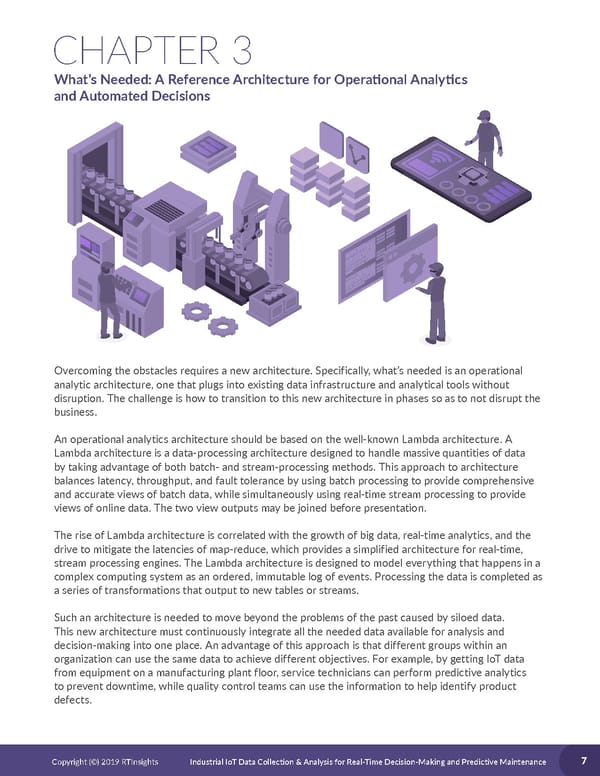CHAPTER 3 What’s Needed: A Reference Architecture for Operational Analytics and Automated Decisions Overcoming the obstacles requires a new architecture. Specifically, what’s needed is an operational analytic architecture, one that plugs into existing data infrastructure and analytical tools without disruption. The challenge is how to transition to this new architecture in phases so as to not disrupt the business. An operational analytics architecture should be based on the well-known Lambda architecture. A Lambda architecture is a data-processing architecture designed to handle massive quantities of data by taking advantage of both batch- and stream-processing methods. This approach to architecture balances latency, throughput, and fault tolerance by using batch processing to provide comprehensive and accurate views of batch data, while simultaneously using real-time stream processing to provide views of online data. The two view outputs may be joined before presentation. The rise of Lambda architecture is correlated with the growth of big data, real-time analytics, and the drive to mitigate the latencies of map-reduce, which provides a simplified architecture for real-time, stream processing engines. The Lambda architecture is designed to model everything that happens in a complex computing system as an ordered, immutable log of events. Processing the data is completed as a series of transformations that output to new tables or streams. Such an architecture is needed to move beyond the problems of the past caused by siloed data. This new architecture must continuously integrate all the needed data available for analysis and decision-making into one place. An advantage of this approach is that different groups within an organization can use the same data to achieve different objectives. For example, by getting IoT data from equipment on a manufacturing plant floor, service technicians can perform predictive analytics to prevent downtime, while quality control teams can use the information to help identify product defects. Copyright (©) 2019 RTInsights Industrial IoT Data Collection & Analysis for Real-Time Decision-Making and Predictive Maintenance 7
 Industrial IoT eBook Page 6 Page 8
Industrial IoT eBook Page 6 Page 8